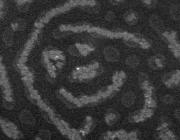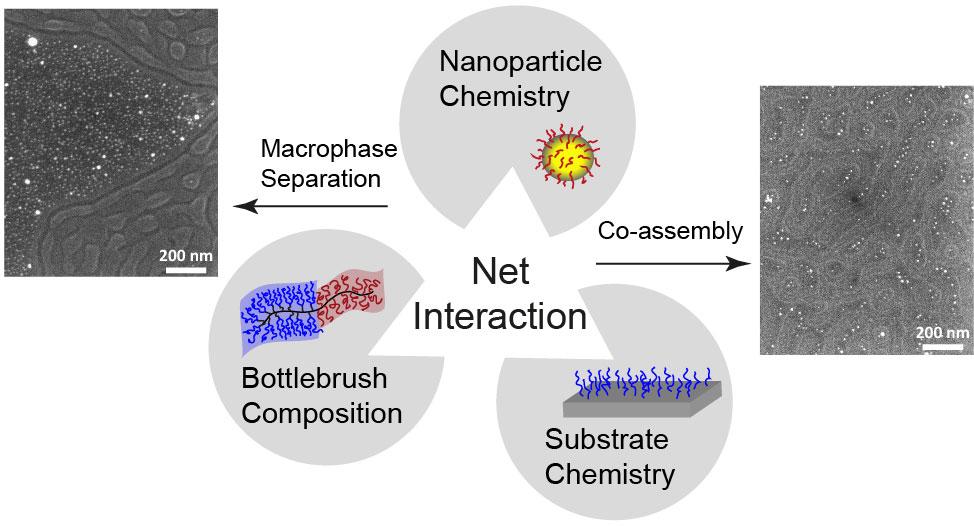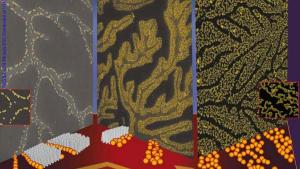Citation:
Abstract:
Bottlebrush block copolymers offer unique advantages for polymer-nanoparticle assembly, arising from the stiffness of their backbones and the compositional tunability afforded by the lengths of the grafts in each block independently. The morphologies of ultrathin bottlebrush block copolymer films are extremely sensitive to the chemistry of the substrate. Modifying the substrate with a polymer brush that corresponds to one of the blocks of the bottlebrush copolymer leads to different, often non-bulk morphologies that relate to the interaction of the copolymer with the substrate, which is dictated by the bottlebrush polymer composition. In this work, we investigate the assembly of bottlebrush block copolymers of different compositions with gold nanoparticles, which are modified with polymeric ligands that correspond to one of the blocks. Our results show that the net interaction of the copolymer with the substrate influences the self-assembly process, leading to two types of routes: the co-assembly route, in which the nanoparticles are organized by the polymer into periodic structures, or macrophase separation. In the co-assembly route, selective substrates slightly distort the shape of the domains. The nanoparticles, in turn, influence the kinetics of the process by their interaction with the substrate.





